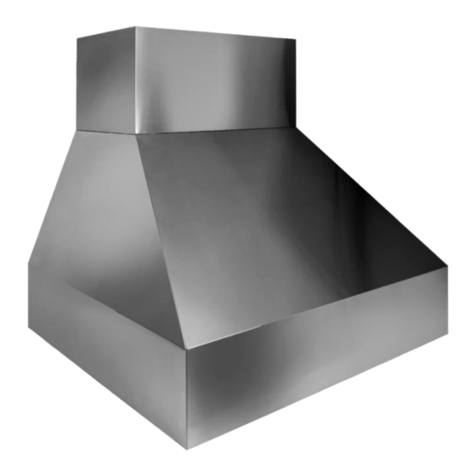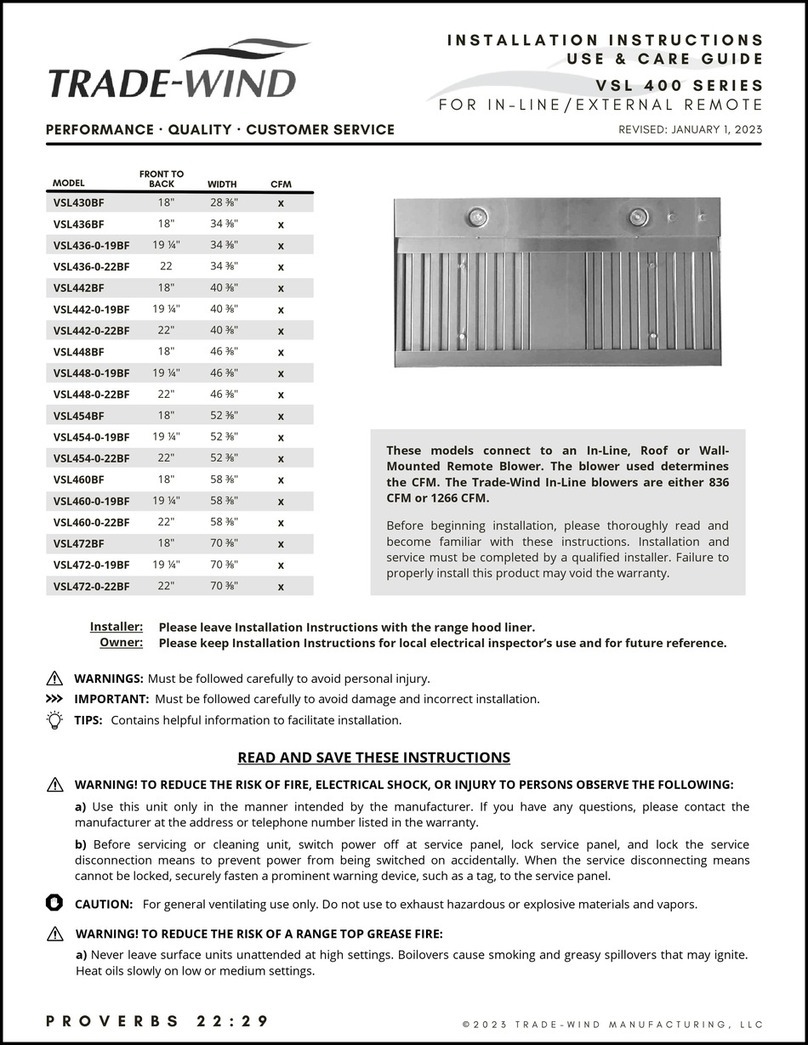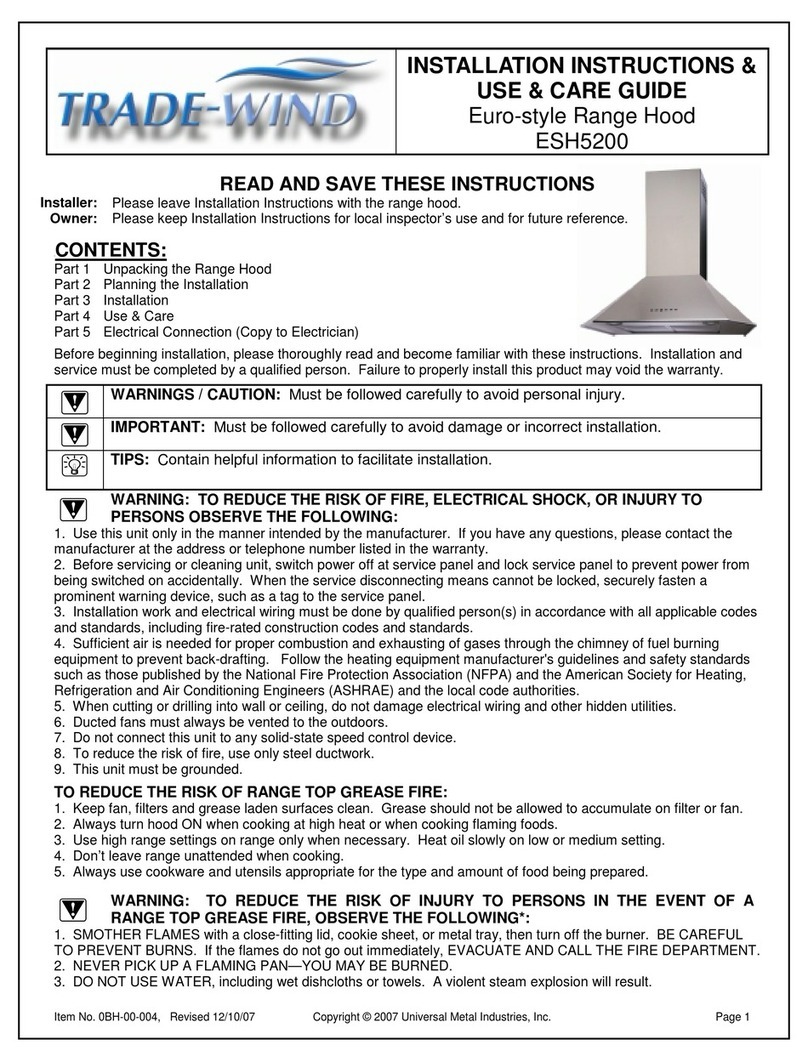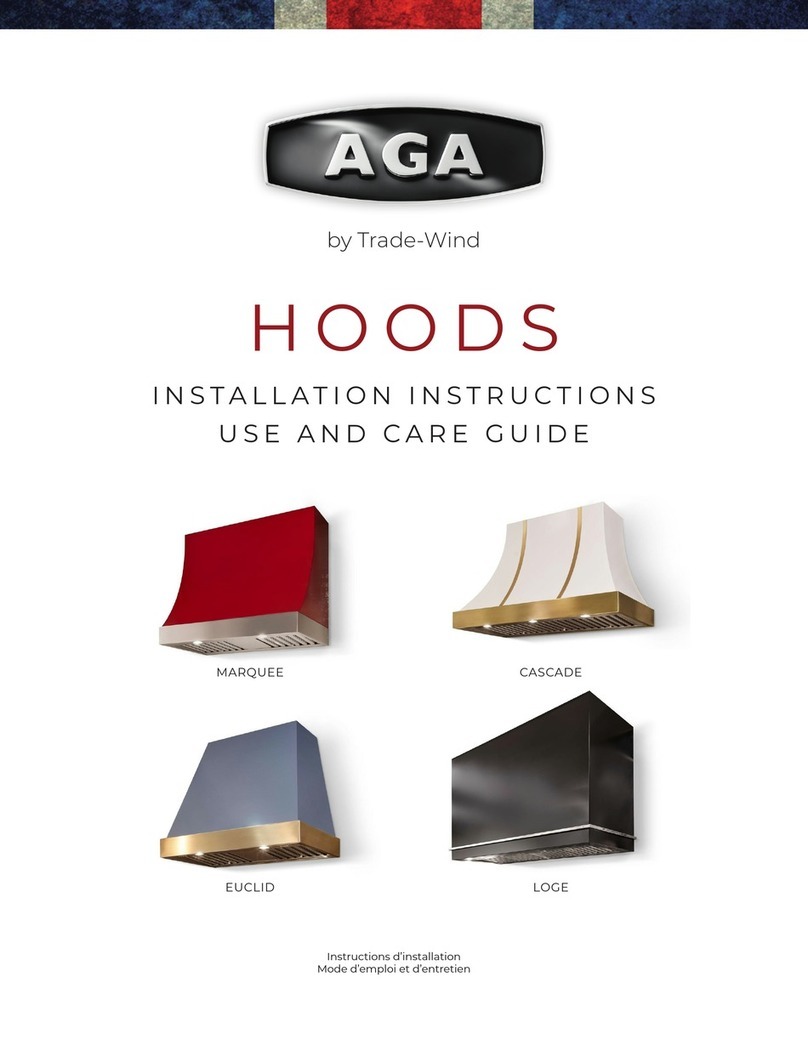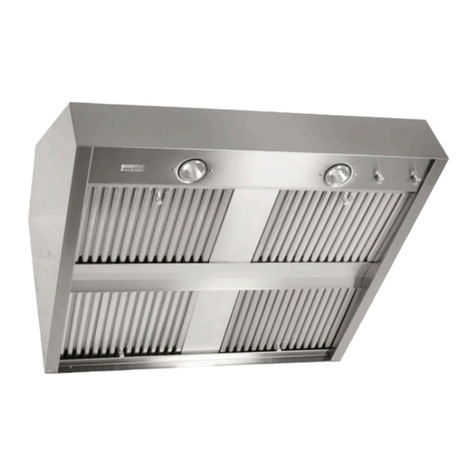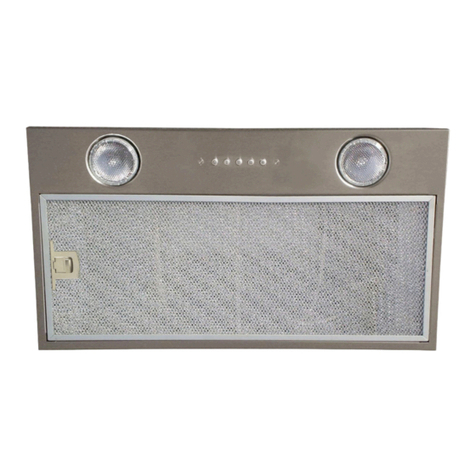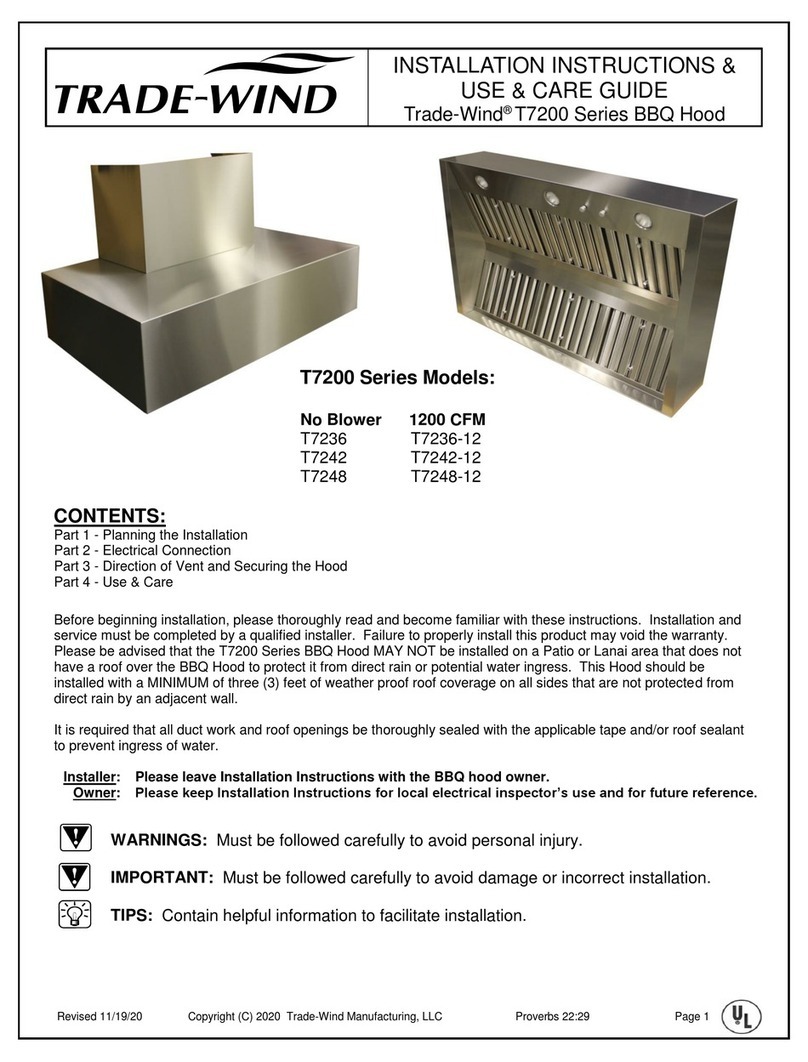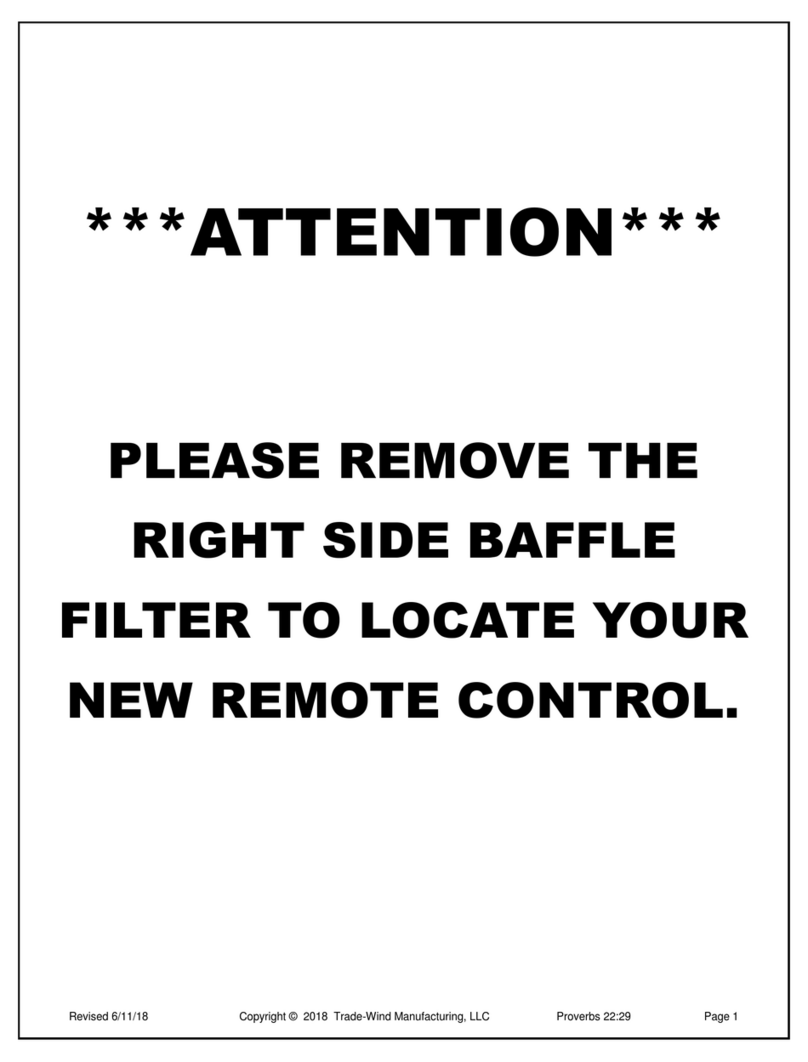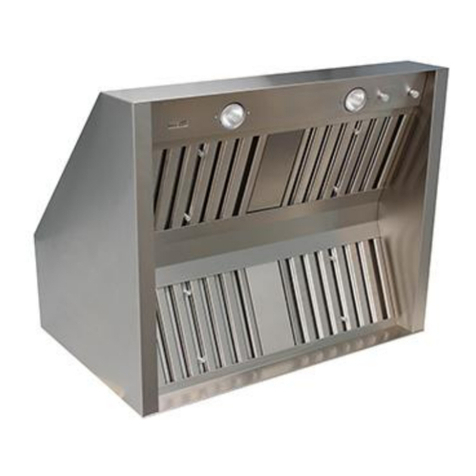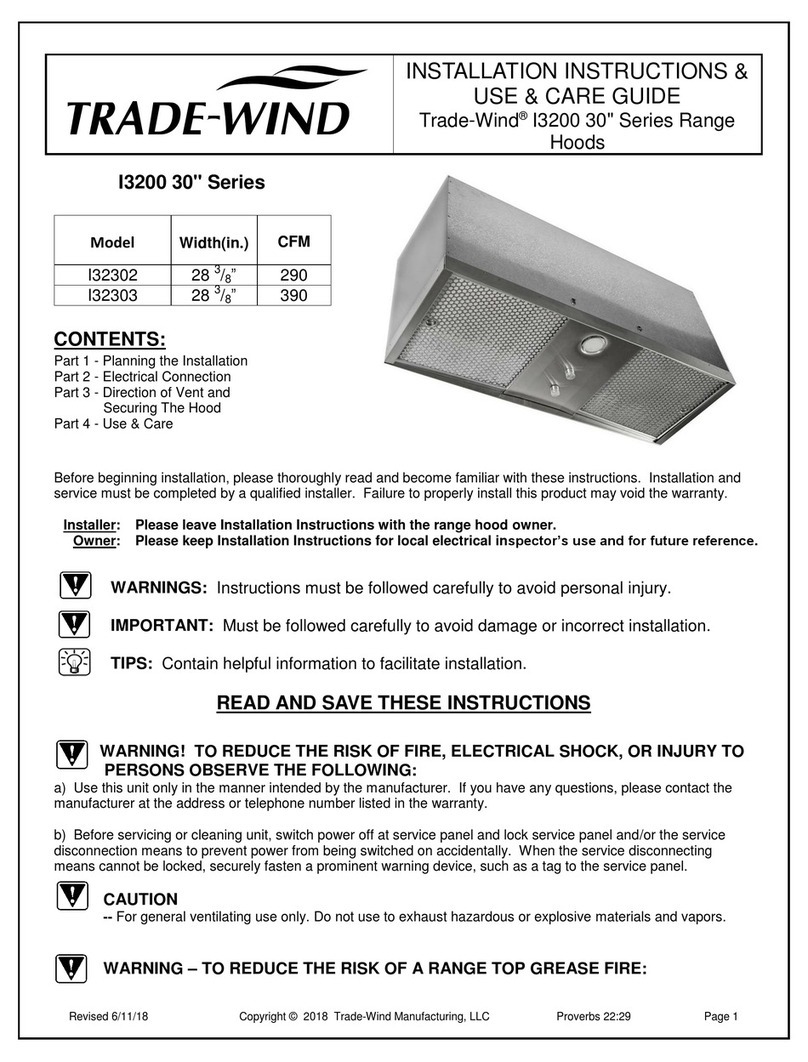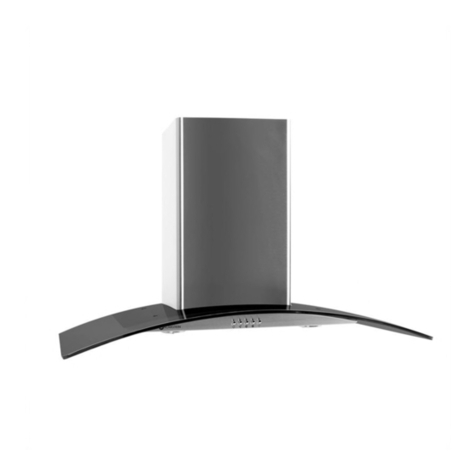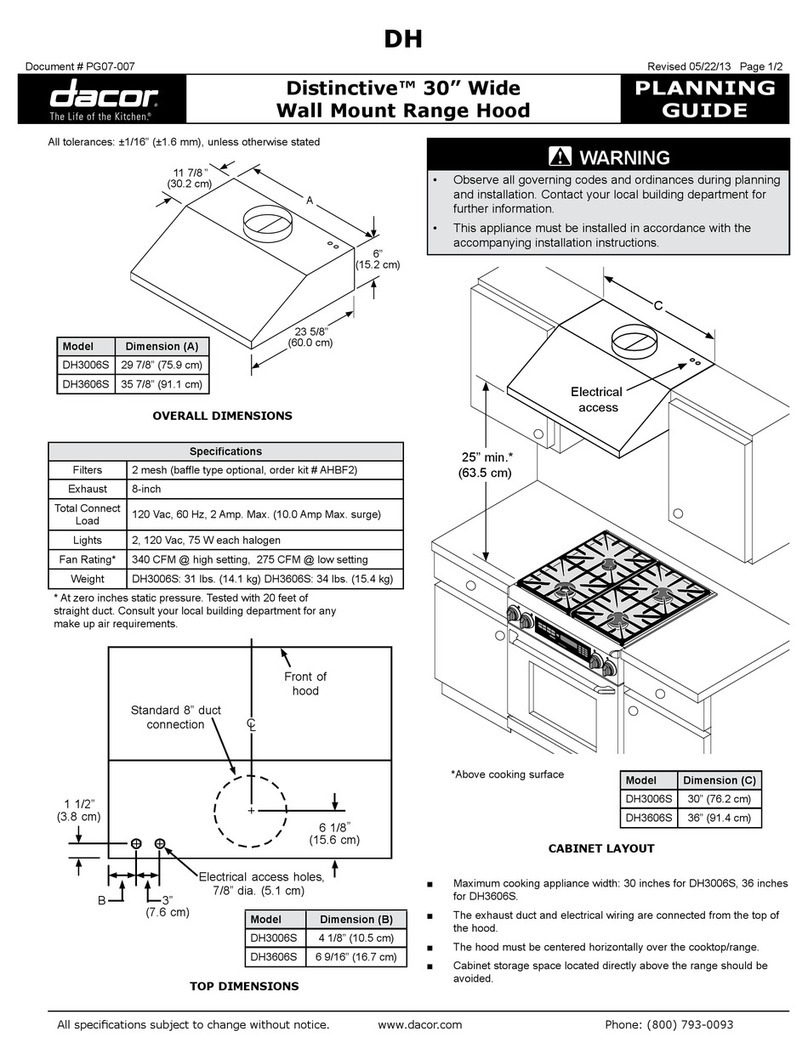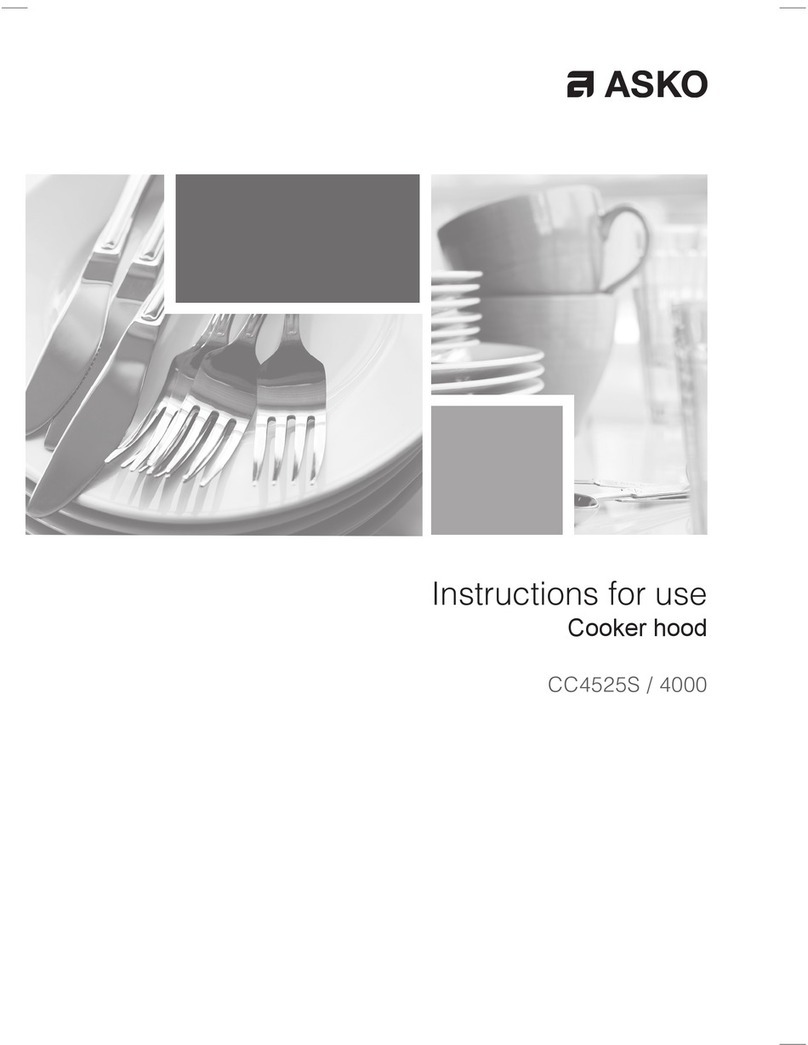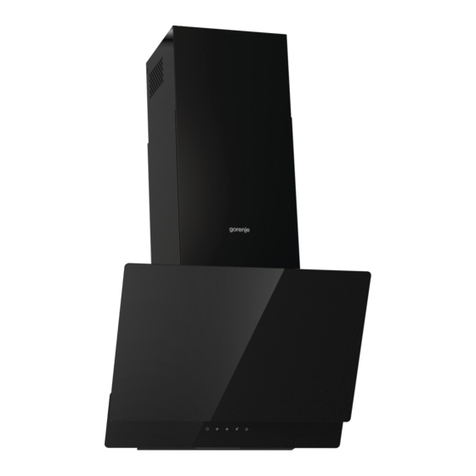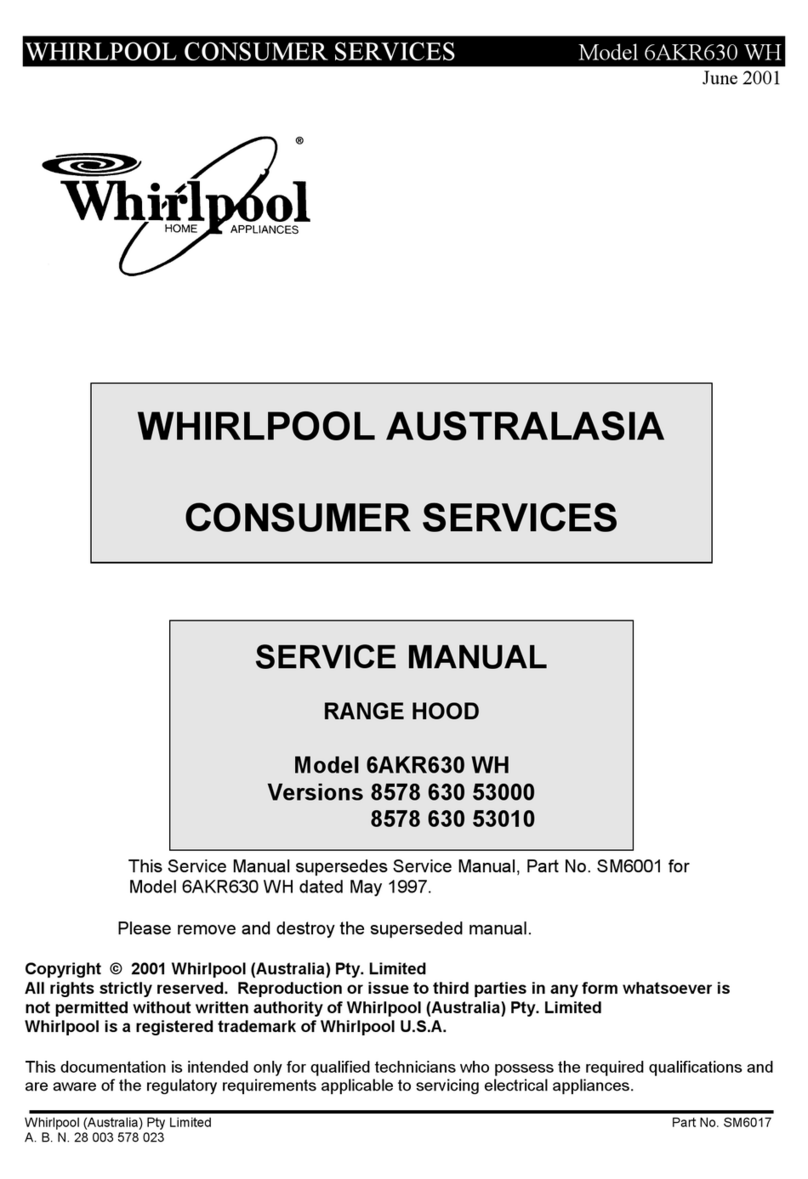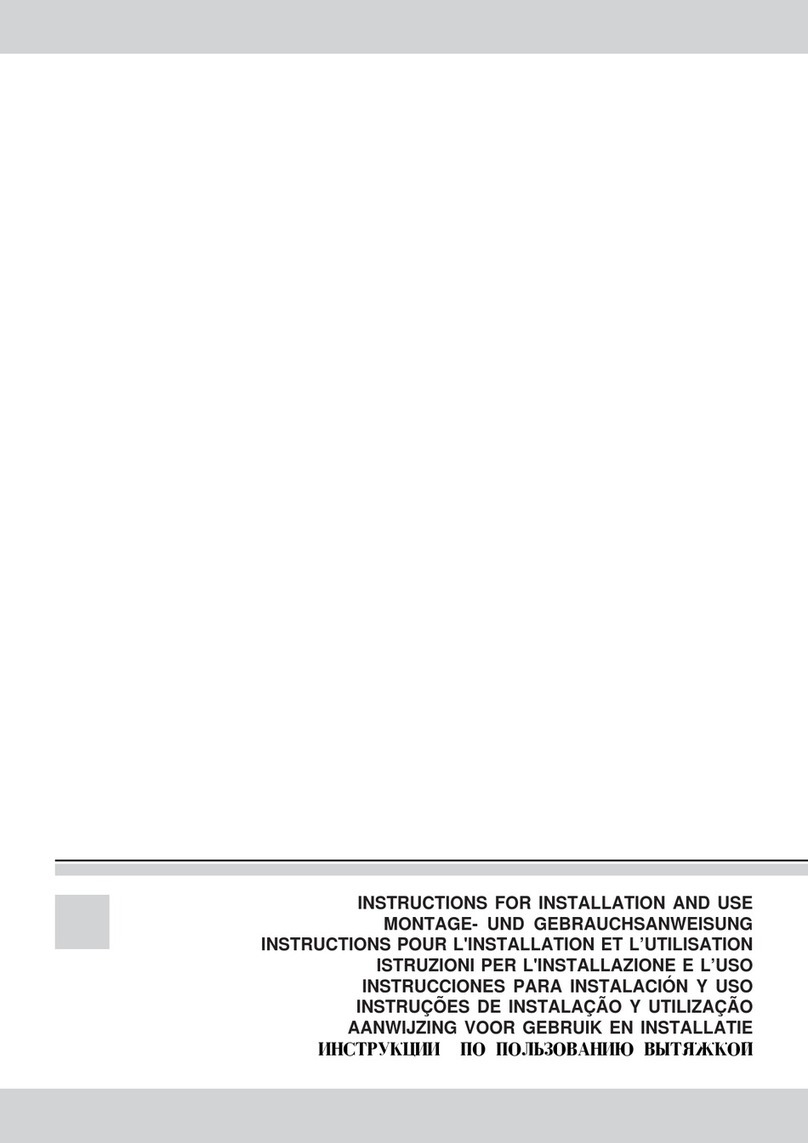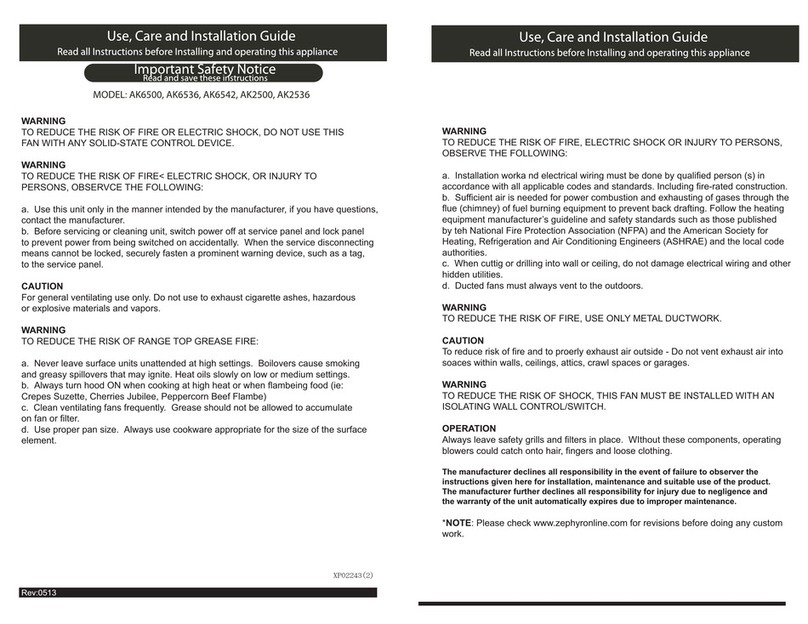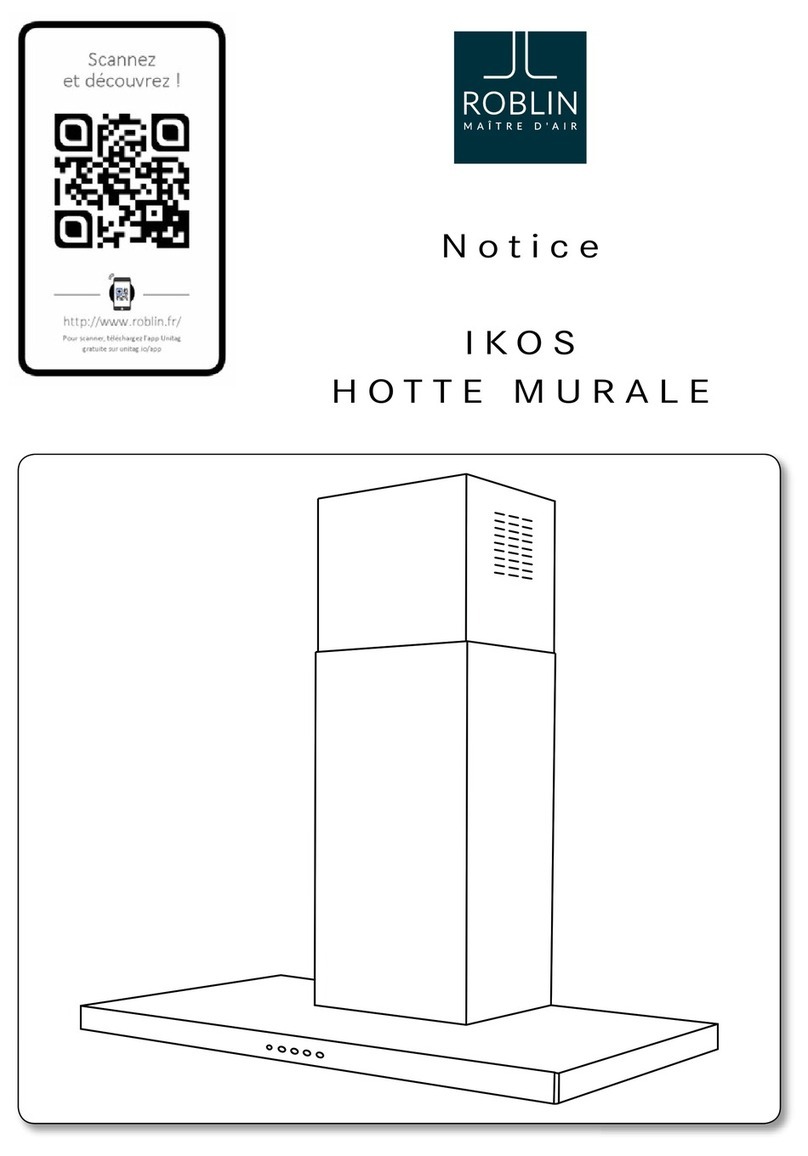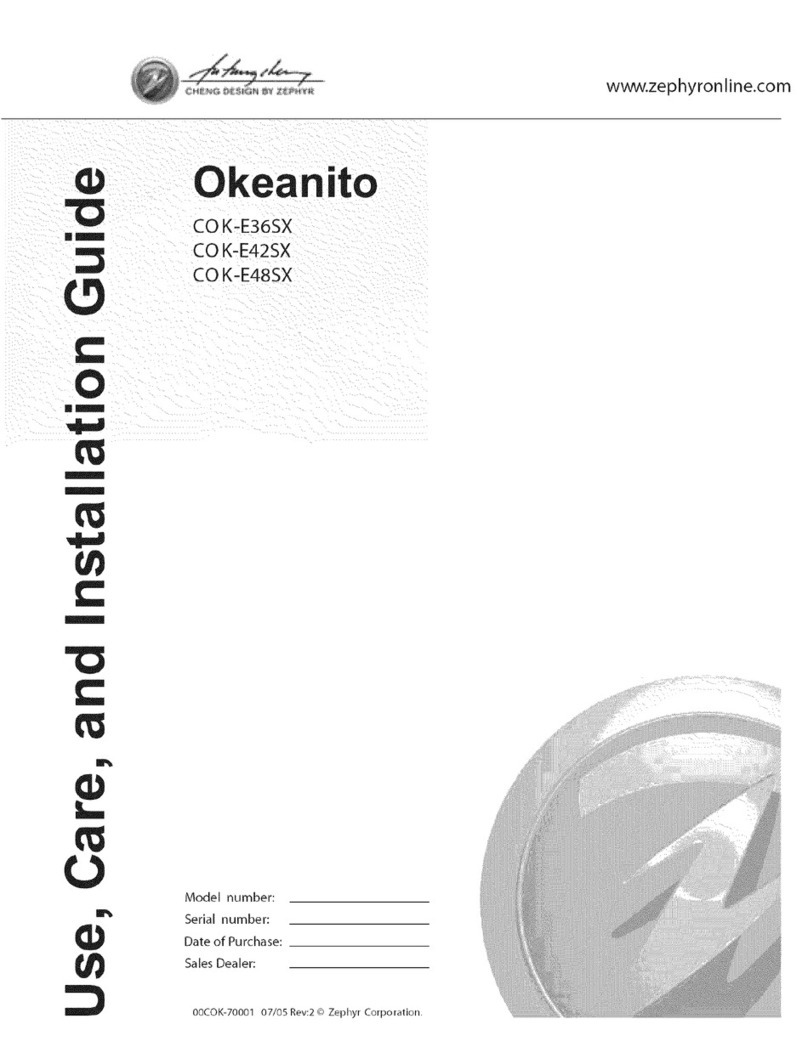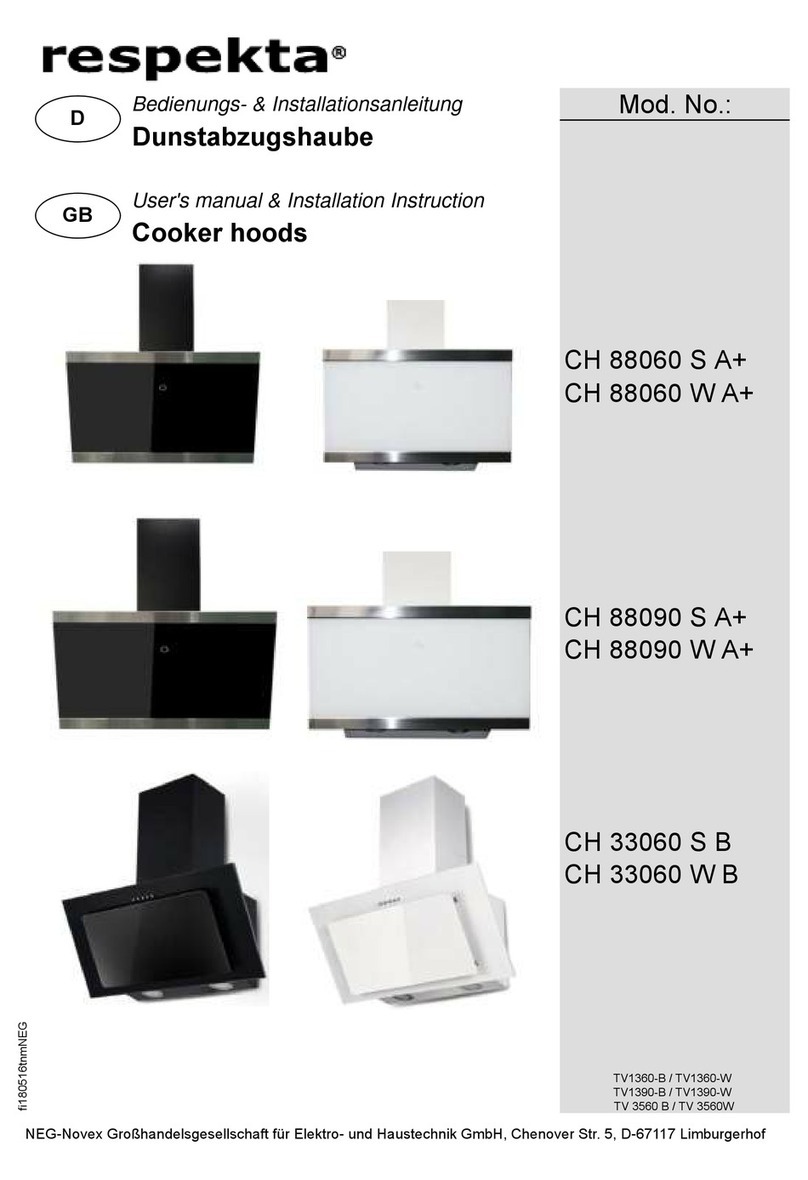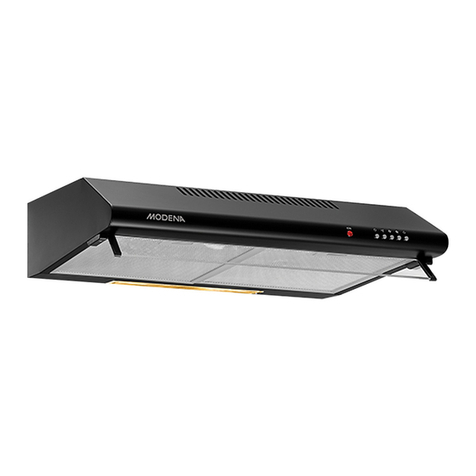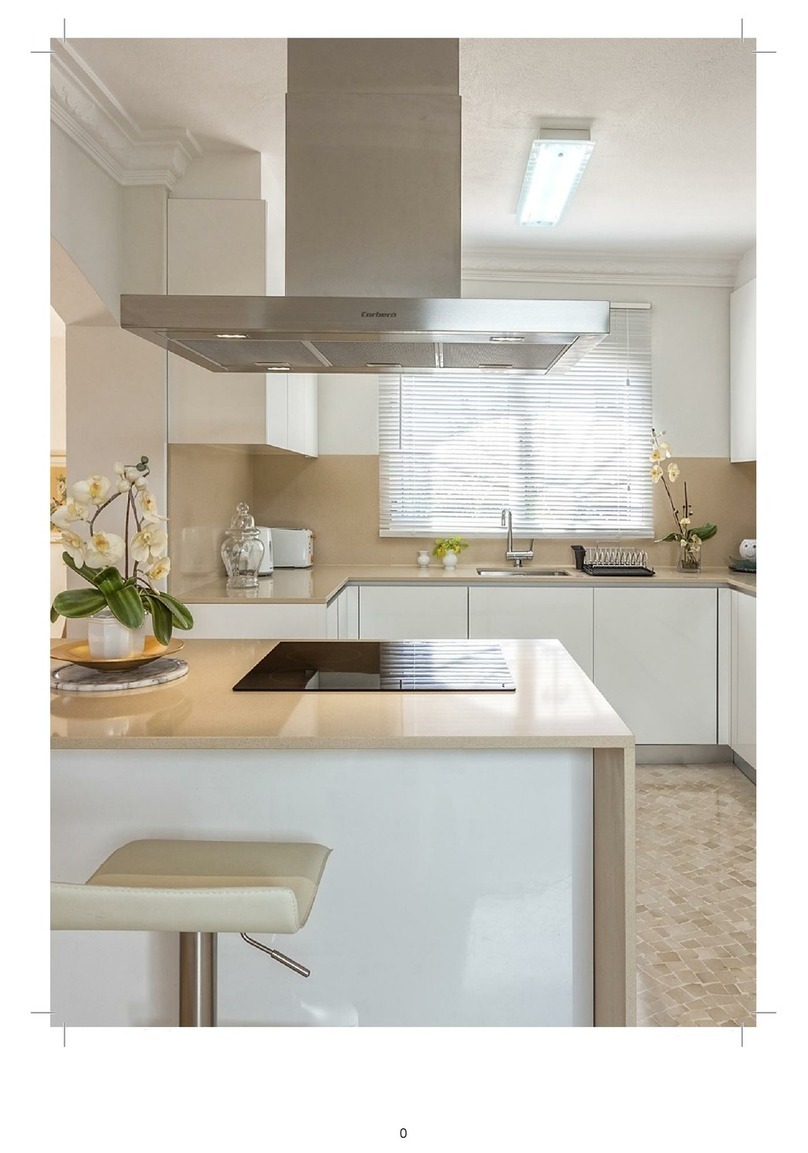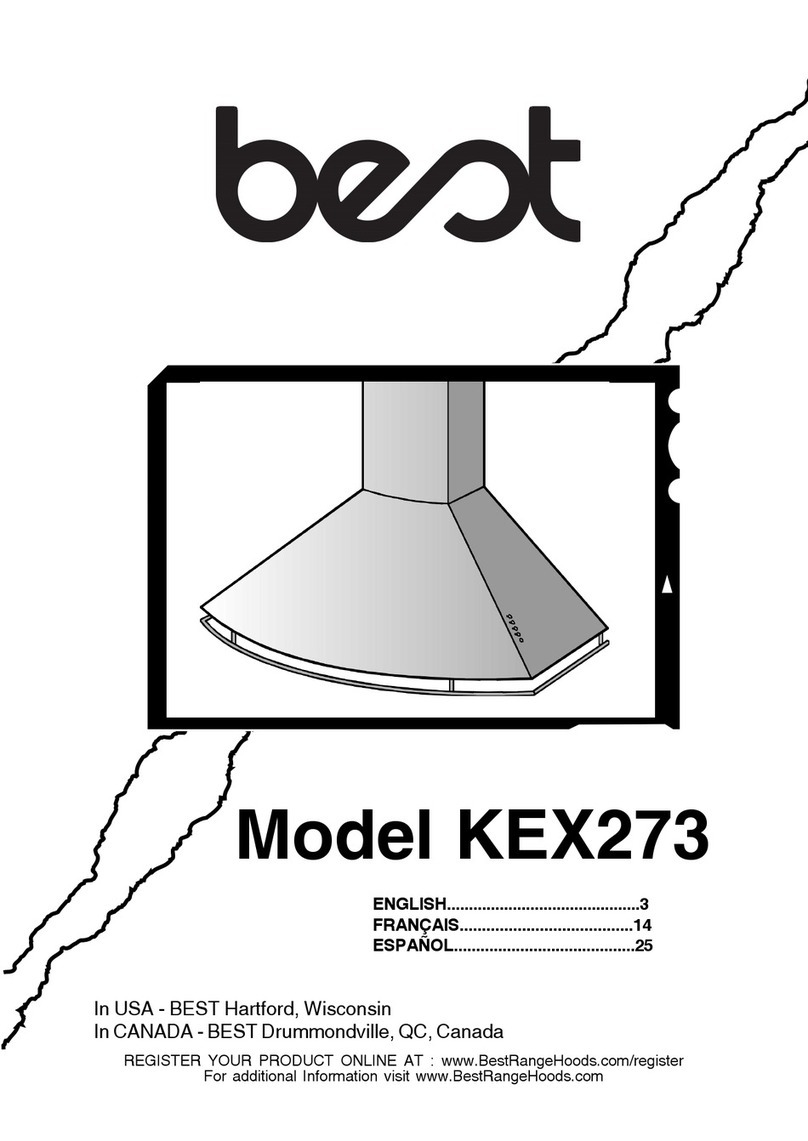REVISED: JANUARY 1, 2023
© 2 0 2 3 T R A D E - W I N D M A N U F A C T U R I N G , L L C
P R O V E R B S 2 2 : 2 9
b. ) No portion of the ducting should be run so that the exhaust air flows downward. Since exhaust heat rises, forcing the
air to flow downward will cause increased static pressure. As previously mentioned, improperly installed duct pipe will
cause excessive static pressure (air resistance), that may result in rattling, vibration and air buffeting noises, as
well as inadequate ventilation.
c. ) Duct runs for 390 CFM ventilator models should not exceed 20 linear feet with two 90-degree elbows (or four 45-
degree elbows), a damper and a roof or wall cap. Longer runs or additional elbows will result in decreased ventilation
performance. Each 90-degree elbow is the equivalent of 8 linear feet of duct pipe; each 45-degree elbow is equivalent to
4 linear feet of duct pipe.
d. ) Duct runs for 600 – 1200 CFM ventilator models should not exceed 35 linear feet with two 90-degree elbows and two
45-degree elbows, a damper and a roof or wall cap. Longer runs or additional elbows will result in decreased ventilation
performance. Each 90-degree elbow is the equivalent of 6 linear feet of duct pipe; each 45-degree elbow is equivalent to 3
linear feet of duct pipe.
e. ) Always run ventilator ducts to the outdoors. DO NOT terminate a duct into an attic, basement, garage, crawl space
under a house, a chimney, other ducting or an enclosed room.
4. DAMPERS
IMPORTANT: DO NOT USE SCREWS TO ATTACH ANY TYPE OF DAMPER AS THE SCREWS MAY BLOCK THE DAMPER
BLADES.
IMPORTANT: DO NOT USE MORE THAN ONE DAMPER IN THE VENTILATION SYSTEM.
NOTE: Many styles of roof caps and wall caps have built-in dampers. See Roof Caps and Wall Caps section for more detail.
Always use carefully crafted, tightly wrapped Aluminum Foil Metal Duct Tape on all connections and physically view and
test the damper blades to make certain they are opening and closing correctly. Make sure that the damper blades do not
touch the duct walls and that there is no debris blocking the free movement of the damper mechanism. Common things
to look for include screws protruding into the blade’s path, overspray of paint, plaster and insulation. If using rectangular
duct, be sure that all four sides of the duct are on the outside of the damper’s start collar or frame. On ventilator
installations designed to recirculate the exhaust air back into the kitchen, be sure to remove the aluminum damper blade
before attaching the duct to the damper frame.
a. ) 390 CFM Models
390 CFM models have either a 3. 25” x 10” rectangular metal damper attached directly to the ventilator or a 7" start
collar that requires a 7" damper (sold separately).
b. ) 600 – 1200 CFM Ventilator Models
600-1200 CFM models have either a 8" or 10" round start collar that requires use of a damper with the
corresponding dimension.
In-line Damper: (for ventilation systems utilizing a roof cap or wall cap without a built-in damper). In cold weather areas,
installing an “in-line” damper may be the preferred type of installation. This is because in-line dampers installed just
above the perimeter of the heated space (the ceiling) will reduce the amount of cold air traveling down the duct into the
heated space and into the kitchen through the ventilator. In-line dampers must be installed so that the exhaust air-flow
will open the butterfly blades.
Horizontal duct runs: the in-line damper must be installed so that the hinge between the two butterfly blades is vertical
—the hinge pin must point up and down. Otherwise, because of gravity, the damper’s blades will not close and the
damper will not prevent backdrafts.
Vertical duct runs: the in-line damper’s hinge will be horizontal (sideways), which is correct for vertical duct runs.
Gravity will help close the damper blades after each use.
Upward slanted duct runs: the in-line damper’s hinge must point to the top and bottom sides of the duct. In his
position, gravity will help close the damper blades after each use. Otherwise, because of gravity, the damper’s blades will
not close and the damper will not prevent backdrafts.
CONTINUE TO NEXT PAGE
Damper in Roof Cap or Wall Cap: In ventilation systems utilizing a roof cap or wall cap with a built-in damper, do not
install an additional in-line damper. Two dampers are unnecessary and will cause increased static pressure (air
resistance), that may result in rattling, vibration and air buffeting noises, as well as inadequate ventilation.











